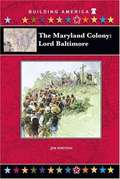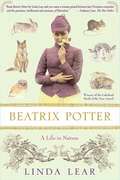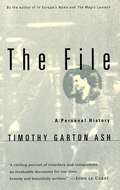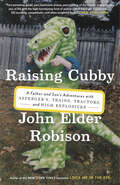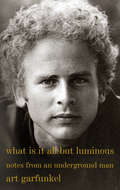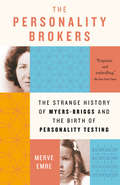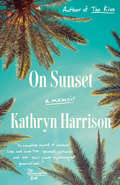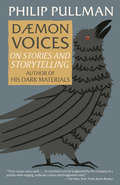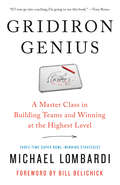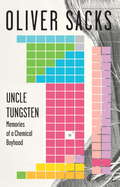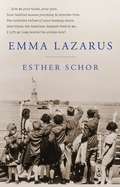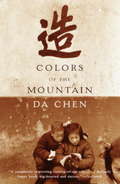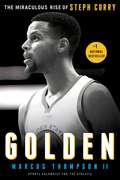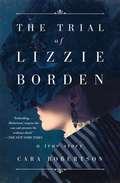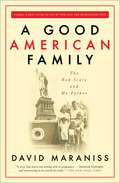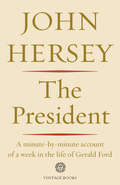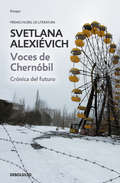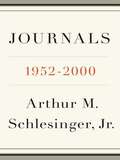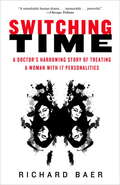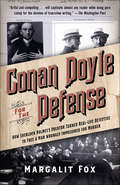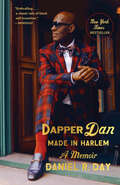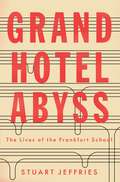- Table View
- List View
The Maryland Colony: Lord Baltimore (Building America)
by Jim WhitingEnglish nobleman George Calvert wanted to establish a colony in the New World not one like his first colony, Newfoundland, which he found to be too cold. Instead he wanted land in the temperate Chesapeake Bay area, where his colonists could grow tobacco. King Charles I granted his wish. Named for Henrietta Mary, Charles s wife, the new colony of Maryland was established in 1634. Also known as Lord Baltimore, Calvert was a Catholic at a time when Protestants controlled the English government. He wanted Maryland to be a place where Catholics and anyone else could worship in freedom. As the British crown was passed through its heirs, favoring Protestants, then Catholics, then Protestants again, Maryland felt the ripples of unrest on its side of the Atlantic. Follow the story of how Maryland came to be a colony and how it fought for its borders with Virginia and Pennsylvania. Find out how in the end, it pulled together with those and the other colonies first to repel the encroaching French, and then to shrug off the tyranny of England.
Beatrix Potter: A Life in Nature
by Linda LearPeter Rabbit, Mr. McGregor, and many other Beatrix Potter characters remain in the hearts of millions. However, though Potter is a household name around the world, few know the woman behind the illustrations. Her personal life, including a romantic relationship with her publisher, Norman Warne, and her significant achievements outside of children's literature remain largely unknown. In Linda Lear's enchanting new biography, we get the life story of this incredible, funny, and independent woman. As one of the first female naturalists in the world, Potter brought the beauty and importance of nature back into the imagination at a time when plunder was more popular than preservation. Through her art she sought to encourage conservation and change the world. With never before seen illustrations and intimate detail, Lear goes beyond our perrenial fascination with Potter as a writer and illustrator of children's books, and delves deeply into the life of a most unusual and gifted woman--one whose art was timeless, and whose generosity left an indelible imprint on the countryside.
The File: A Personal History
by Timothy Garton Ash"Eloquent, aware and scrupulous . . . a rich and instructive examination of the Cold War past." --The New York TimesIn 1978 a romantic young Englishman took up residence in Berlin to see what that divided city could teach him about tyranny and freedom. Fifteen years later Timothy Garton Ash--who was by then famous for his reportage of the downfall of communism in Central Europe--returned. This time he had come to look at a file that bore the code-name "Romeo." The file had been compiled by the Stasi, the East German secret police, with the assistance of dozens of informers. And it contained a meticulous record of Garton Ash's earlier life in Berlin. In this memoir, Garton Ash describes what it was like to rediscover his younger self through the eyes of the Stasi, and then to go on to confront those who actually informed against him to the secret police. Moving from document to remembrance, from the offices of British intelligence to the living rooms of retired Stasi officers, The File is a personal narrative as gripping, as disquieting, and as morally provocative as any fiction by George Orwell or Graham Greene. And it is all true."In this painstaking, powerful unmasking of evil, the wretched face of tyranny is revealed." --Philadelphia Inquirer
Raising Cubby: A Father and Son's Adventures with Asperger's, Trains, Tractors, and High Explosives
by John Elder RobisonThe slyly funny, sweetly moving memoir of an unconventional dad's relationship with his equally offbeat son--complete with fast cars, tall tales, homemade explosives, and a whole lot of fun and trouble John Robison was not your typical dad. Diagnosed with Asperger's syndrome at the age of forty, he approached fatherhood as a series of logic puzzles and practical jokes. Instead of a speech about the birds and the bees, he told his son, Cubby, that he'd bought him at the Kid Store--and that the salesman had cheated him by promising Cubby would "do all chores." While other parents played catch with their kids, John taught Cubby to drive the family's antique Rolls-Royce. Still, Cubby seemed to be turning out pretty well, at least until school authorities decided that he was dumb and stubborn--the very same thing John had been told as a child. Did Cubby have Asperger's too? The answer was unclear. One thing was clear, though: By the time he turned seventeen, Cubby had become a brilliant and curious chemist--smart enough to make military-grade explosives and bring federal agents calling. With Cubby facing a felony trial--and up to sixty years in prison--both father and son were forced to take stock of their lives, finally accepting that being "on the spectrum" is both a challenge and a unique gift.nd a bracing lack of sentimentality." --Entertainment Weekly"Endearing...Robison is a natural storyteller." --Boston Globe
What Is It All but Luminous: Notes from an Underground Man
by Art GarfunkelFrom the golden-haired, curly-headed half of Simon & Garfunkel--a memoir (of sorts): artful, moving, lyrical; the making of a musician; the evolution of a man, a portrait of a life-long friendship and collaboration that became one of the most successful singing duos of their time. Art Garfunkel writes about his life before, during, and after Simon & Garfunkel . . . about their folk-rock music in the roiling age that embraced and was defined by their pathbreaking sound. He writes about growing up in the 1940s and '50s (son of a traveling salesman), a middle class Jewish boy, living in a red brick semi-attached house in Kew Gardens, Queens, a kid who was different--from the age of five feeling his vocal cords "vibrating with the love of sound" . . . meeting Paul Simon in school, the funny guy who made Art laugh; their going on to junior high school together, of being twelve at the birth of rock'n'roll, both of them "captured" by it; going to a recording studio in Manhattan to make a demo of their song, "Hey Schoolgirl" (for $7!) and the actual record (with Paul's father on bass) going to #40 on the national charts, selling 150,000 copies . . . He writes about their becoming Simon & Garfunkel, taking the world by storm, ruling the pop charts from the time he was sixteen, about not being a natural performer, but more a thinker . . . touring; sex-for-thrills on the road, reading or walking to calm down (walking across two continents--the USA and Europe). He writes of being an actor working with directors Nicolas Roeg (Bad Timing) and Mike Nichols ("the greatest of them all") . . . getting his masters in mathematics at Columbia; choosing music over a PhD; his slow unfolding split with Paul and its aftermath; learning to perform on his own, giving a thousand concerts worldwide, his voice going south (a stiffening of one vocal cord) and working to get it back . . . about being a husband, a father and much more.
The Personality Brokers: The Strange History of Myers-Briggs and the Birth of Personality Testing
by Merve Emre"Inventive and beguiling... The Personality Brokers is history that reads like biography that reads like a novel--a fluid narrative that defies expectations and plays against type." --New York Times"Riveting [and] far-reaching... [Emre] brings the skills of a detective, cultural critic, historian, scientist and biographer to bear on the MBTI and the two women who invented and promoted it" --Wall Street JournalAn unprecedented history of the personality test conceived a century ago by a mother and her daughter--fiction writers with no formal training in psychology--and how it insinuated itself into our boardrooms, classrooms, and beyondThe Myers-Briggs Type Indicator is the most popular personality test in the world. It is used regularly by Fortune 500 companies, universities, hospitals, churches, and the military. Its language of personality types--extraversion and introversion, sensing and intuiting, thinking and feeling, judging and perceiving--has inspired television shows, online dating platforms, and Buzzfeed quizzes. Yet despite the test's widespread adoption, experts in the field of psychometric testing, a $2 billion industry, have struggled to validate its results--no less account for its success. How did Myers-Briggs, a homegrown multiple choice questionnaire, infiltrate our workplaces, our relationships, our Internet, our lives? First conceived in the 1920s by the mother-daughter team of Katherine Briggs and Isabel Briggs Myers, a pair of devoted homemakers, novelists, and amateur psychoanalysts, Myers-Briggs was designed to bring the gospel of Carl Jung to the masses. But it would take on a life entirely its own, reaching from the smoke-filled boardrooms of mid-century New York to Berkeley, California, where it was administered to some of the twentieth century's greatest creative minds. It would travel across the world to London, Zurich, Cape Town, Melbourne, and Tokyo, until it could be found just as easily in elementary schools, nunneries, and wellness retreats as in shadowy political consultancies and on social networks.Drawing from original reporting and never-before-published documents, The Personality Brokers takes a critical look at the personality indicator that became a cultural icon. Along the way it examines nothing less than the definition of the self--our attempts to grasp, categorize, and quantify our personalities. Surprising and absorbing, the book, like the test at its heart, considers the timeless question: What makes you, you?
On Sunset: A Memoir
by Kathryn HarrisonIn the tradition of The Hare with Amber Eyes and Running in the Family, a memoir of the author's upbringing by her grandparents in a fading mansion above Sunset Boulevard -- a childhood at once privileged and unusual, filled with the mementos and echoes of their impossibly exotic and peripatetic lives. <P><P>Kathryn Harrison always understood that her family was beyond eccentric -- they'd breached the bounds of the unconventional. She was largely raised by her grandparents in an outsized Tudor confection of a house on the periphery of Bel Air, which she thought of as "Sunset," her kingdom of the imagination, inhabited by the past and its numberless artifacts. True wandering Jews, her grandparents had arrived in Los Angeles in the forties after dramatic, globetrotting lives. <P><P>Harry Jacobs had been a fur trapper in Alaska, a soldier in the trenches of the Great War, a traveling salesman in a Model T. Margaret Sassoon had lived a privileged life as a member of a Jewish merchant family in Shanghai, turning down offers of marriage from Russian princes exiled by the Revolution. Kathryn Harrison grew up in an almost mythical realm of their letters and artifacts and stories -- until declining finances forced to sell the house on Sunset in 1971, and night fell fast. <P><P>On Sunset seeks to recover that childhood, that place, those lives -- and does so with piercing poignancy.
Daemon Voices: On Stories and Storytelling
by Philip PullmanFrom the internationally best-selling author of the His Dark Materials trilogy, a spellbinding journey into the secrets of his art--the narratives that have shaped his vision, his experience of writing, and the keys to mastering the art of storytelling.One of the most highly acclaimed and best-selling authors of our time now gives us a book that charts the history of his own enchantment with story--from his own books to those of Blake, Milton, Dickens, and the Brothers Grimm, among others--and delves into the role of story in education, religion, and science. At once personal and wide-ranging, Daemon Voices is both a revelation of the writing mind and the methods of a great contemporary master, and a fascinating exploration of storytelling itself.
Gridiron Genius: A Master Class in Winning Championships and Building Dynasties in the NFL
by Bill Belichick Michael LombardiFormer NFL general manager and three-time Super Bowl winner Michael Lombardi reveals what makes football organizations tick at the championship level. From personnel to practice to game-day decisions that win titles, Lombardi shares what he learned working with coaching legends Bill Walsh of the 49ers, Al Davis of the Raiders, and Bill Belichick of the Patriots, among others, during his three decades in football. <P><P>Why do some NFL franchises dominate year after year while others can never crack the code of success? <P><P>For 30 years Michael Lombardi had a front-row seat and full access as three titans--Bill Walsh, Al Davis, and Bill Belichick--reinvented the game, turning it into a national obsession while piling up Super Bowl trophies. Now, in Gridiron Genius, Lombardi provides the blueprint that makes a successful organization click and win--and the mistakes unsuccessful organizations make that keep them on the losing side time and again. <P><P>In reality, very few coaches understand the philosophies, attention to detail, and massive commitment that defined NFL juggernauts like the 49ers and the Patriots. The best organizations are not just employing players, they are building something bigger. Gridiron Genius will explain how the best leaders evaluate, acquire, and utilize personnel in ways other professional minds, football and otherwise, won't even contemplate. How do you know when to trade a player? How do you create a positive atmosphere when everyone is out to maximize his own paycheck? And why is the tight end like the knight on a chessboard? <P><P>To some, game planning consists only of designing an attack for the next opponent. But Lombardi explains how the smartest leaders script everything: from an afternoon's special-teams practice to a season's playoff run to a decade-long organizational blueprint. Readers will delight in the Lombardi tour of an NFL weekend, including what really goes on during the game on and off the field and inside the headset. First stop: Belichick's Saturday night staff meeting, where he announces how the game will go the next day. Spoiler alert: He always nails it. <P><P>Football dynasties are built through massive attention to detail and unwavering commitment. From how to build a team, to how to watch a game, to understanding the essential qualities of great leaders, Gridiron Genius gives football fans the knowledge to be the smartest person in the room every Sunday.
Uncle Tungsten: Memories of a Chemical Boyhood
by Oliver SacksLong before Oliver Sacks became a distinguished neurologist and bestselling writer, he was a small English boy fascinated by metals–also by chemical reactions (the louder and smellier the better), photography, squids and cuttlefish, H.G. Wells, and the periodic table. In this endlessly charming and eloquent memoir, the author of The Man Who Mistook His Wife for a Hat and Awakenings chronicles his love affair with science and the magnificently odd and sometimes harrowing childhood in which that love affair unfolded.In Uncle Tungsten we meet Sacks’ extraordinary family, from his surgeon mother (who introduces the fourteen-year-old Oliver to the art of human dissection) and his father, a family doctor who imbues in his son an early enthusiasm for housecalls, to his “Uncle Tungsten,” whose factory produces tungsten-filament lightbulbs. We follow the young Oliver as he is exiled at the age of six to a grim, sadistic boarding school to escape the London Blitz, and later watch as he sets about passionately reliving the exploits of his chemical heroes–in his own home laboratory. Uncle Tungsten is a crystalline view of a brilliant young mind springing to life, a story of growing up which is by turns elegiac, comic, and wistful, full of the electrifying joy of discovery.
Emma Lazarus (Jewish Encounters Series)
by Esther SchorEmma Lazarus’s most famous poem gave a voice to the Statue of Liberty, but her remarkable life has remained a mystery until now. She was a woman so far ahead of her time that we are still scrambling to catch up with her–a feminist, a Zionist, and an internationally famous Jewish American writer before thse categories even existed. Drawing upon a cache of personal letters undiscovered until the 1980, Esther Schor brings this vital woman to life in all her complexity. Born into a wealthy Sephardic family in 1849, Lazarus published her first volume of verse at seventeen and gained entrée into New York’s elite literary circles. Although she once referred to her family as “outlaw” Jews, she felt a deep attachment to Jewish history and peoplehood. Her compassion for the downtrodden Jews of Eastern Europe–refugees whose lives had little in common with her own–helped redefine the meaning of America itself. In this groundbreaking biography, Schor argues persuasively for Lazarus’s place in history as a poet, an activist, and a prophet of the world we all inhabit today–a world that she helped to invent. From the Hardcover edition.
Colors of the Mountain
by Da Chen"I was born in southern China in 1962, in the tiny town of Yellow Stone. They called it the Year of Great Starvation. " In 1962, as millions of Chinese citizens were gripped by Mao Zedong's Cultural Revolution and the Red Guards enforced a brutal regime of communism, a boy was born to a poor family in southern China. This family--the Chens--had once been respected landlords in the village of Yellow Stone, but now they were among the least fortunate families in the country, despised for their "capitalist" past. Grandpa Chen couldn't leave the house for fear of being beaten to death; the children were spit upon in the street; and their father was regularly hauled off to labor camps, leaving the family of eight without a breadwinner. Da Chen, the youngest child, seemed destined for a life of poverty, shame, and hunger. But winning humor and an indomitable spirit can be found in the most unexpected places. Colors of the Mountain is a story of triumph, a memoir of a boyhood full of spunk, mischief, and love. The young Da Chen is part Horatio Alger, part Holden Caul-field; he befriends a gang of young hoodlums as well as the elegant, elderly Chinese Baptist woman who teaches him English and opens the door to a new life. Chen's remarkable story is full of unforgettable scenes of rural Chinese life: feasting on oysters and fried peanuts on New Year's Day, studying alongside classmates who wear red armbands and quote Mao, and playing and working in the peaceful rice fields near his village. Da Chen's story is both captivating and endearing, filled with the universal human quality that distinguishes the very best memoirs. It proves once again that the concerns of childhood transcend time and place.
Golden: The Miraculous Rise of Steph Curry
by Marcus ThompsonThe incredible and inspiring story of Stephen Curry, the greatest shooter basketball has ever seen, and the ascension of the Golden State Warriors, a team on the verge of being an NBA dynasty, by long-time Warriors beat reporter and Bay Area News Group sports columnist Marcus Thompson.When it comes to Stephen Curry—point guard for the Golden State Warriors and reigning MVP of the NBA—journalists, fans, and sports analysts are running out of ways to say “wow.” Deemed too small and too short at 6’3 and 180 pounds by NBA coaches around the league, Curry has taken the game back from the bigger men who usually dominate the court. With his incredible shooting ability that started a “three-point revolution” he led the Warriors to seventy-three wins in the 2015-2016 season, beating out Michael Jordan and the 1996 Chicago Bulls’ long-time record. Told by Marcus Thompson, a lifelong Warriors insider who has been reporting on the team for twelve seasons, Golden is the definitive story of this singular talent. Thompson explores this all-star player, his love for the game and his team, and his close-knit and supportive family—including his Instagram celebrity chef wife Ayesha and adorable young daughters. From avid fans to newcomers of the sport, Curry has become a role model for both children and aspiring players everywhere. And he leads the ultimate team, a collection of talent and personalities that complement Curry’s game and push him to heights no one ever imagined for a kid from Davidson or this beleaguered franchise. These Warriors have carved out their place in history as one of the most memorable and transformative the NBA has ever seen. And they are led by a superstar who has solidified his place among the greats.
The Trial of Lizzie Borden
by Cara RobertsonThe remarkable new account of an essential piece of American mythology—the trial of Lizzie Borden—based on twenty years of research and recently unearthed evidence.The Trial of Lizzie Borden tells the true story of one of the most sensational murder trials in American history. When Andrew and Abby Borden were brutally hacked to death in Fall River, Massachusetts, in August 1892, the arrest of the couple’s younger daughter Lizzie turned the case into international news and her trial into a spectacle unparalleled in American history. Reporters flocked to the scene. Well-known columnists took up conspicuous seats in the courtroom. The defendant was relentlessly scrutinized for signs of guilt or innocence. Everyone—rich and poor, suffragists and social conservatives, legal scholars and laypeople—had an opinion about Lizzie Borden’s guilt or innocence. Was she a cold-blooded murderess or an unjustly persecuted lady? Did she or didn’t she? The popular fascination with the Borden murders and its central enigmatic character has endured for more than one hundred years. Immortalized in rhyme, told and retold in every conceivable genre, the murders have secured a place in the American pantheon of mythic horror, but one typically wrenched from its historical moment. In contrast, Cara Robertson explores the stories Lizzie Borden’s culture wanted and expected to hear and how those stories influenced the debate inside and outside of the courtroom. Based on transcripts of the Borden legal proceedings, contemporary newspaper accounts, unpublished local accounts, and recently unearthed letters from Lizzie herself, The Trial of Lizzie Borden offers a window onto America in the Gilded Age, showcasing its most deeply held convictions and its most troubling social anxieties.
A Good American Family: The Red Scare and My Father
by David MaranissIn a riveting book with powerful resonance today, Pulitzer Prize-winning author David Maraniss captures the pervasive fear and paranoia that gripped America during the Red Scare of the 1950s through the chilling yet affirming story of his family’s ordeal, from blacklisting to vindication.Elliott Maraniss, David’s father, a WWII veteran who had commanded an all-black company in the Pacific, was spied on by the FBI, named as a communist by an informant, called before the House Un-American Activities Committee in 1952, fired from his newspaper job, and blacklisted for five years. Yet he never lost faith in America and emerged on the other side with his family and optimism intact. In a sweeping drama that moves from the Depression and Spanish Civil War to the HUAC hearings and end of the McCarthy era, Maraniss weaves his father’s story through the lives of his inquisitors and defenders as they struggle with the vital twentieth-century issues of race, fascism, communism, and first amendment freedoms. A Good American Family powerfully evokes the political dysfunctions of the 1950s while underscoring what it really means to be an American. It is an unsparing yet moving tribute from a brilliant writer to his father and the family he protected in dangerous times.
The President: A Minute-by-minute Account of a Week in the Life of Gerald Ford
by John HerseyThe President has given me permission to take a kind of voyage with him—to watch him closely through a working week….I will be with him, most of the time, hour in and hour out…. At 8:33 on a rainy Monday in March, 1975, John Hersey sits down on a straight cane-backed chair in the Oval Office to begin soaking up impressions of what happens—in post-Watergate Washington—at the center of American power. Through five and a half days, he will stay close to the President, observing him as he consults with his own staff, with members of Congress, with his Cabinet, with Rockefeller; watching him on the exercise bike, at the barber’s, greeting Miss America: absorbing his confidences as he talks after dinner, in the private quarters of the White House, about his childhood and about his college years when it was difficult to make ends meet. Following the President, Hersey observes in detail all the important moments—as well as the incidental ones—that show what Gerald Ford is like on the job. In this extraordinary book he builds a brilliant and revealing portrait, letting the reader see Ford’s strengths and limitations. And so perceptively does Hersey draw significance from his observations that the insights seem to explode like time bombs. I have seen all week that it is not easy for Gerald Ford…to make what he refers to, in the language of umpires, as “a tough call.” Yet once he has made such a decision, he does not agonize…he becomes convinced of its rightness and is stubborn in its defense…. In reading The President, each of us emerges knowing more than ever before, not only about this imperturbable “iron” man, the first President we did not elect, but also about how the Presidency really operates. In John Hersey’s report we come to understand—the man, and the things that persuade him. And we come to sense…how good it would be if in some way he could speak—good listener that he is—one-to-one with ordinary men and women, his constituents, from whom he has somehow drifted so far away.
Life Sketches
by John HerseyThis collection—harvest of a lifetime of brilliant reportage and reflection—brings together the most memorable biographical pieces John Hersey has written over the past fifty years. His subjects range from Sinclair Lewis, for whom the twenty-three-year-old Hersey was secretary, and the young John F. Kennedy as he related to Hersey the dramatic story of PT 109, to Private John Daniel Ramey and his efforts to overcome illiteracy with the help of the U.S. Army, and Jessica Kelley, an elderly widow trapped in a buckling tenement as the 1955 Connecticut floods raged outside. Whether describing a brisk morning stroll with President Truman or hours spent fishing for blues with Lillian Hellman, recounting Benjamin Weintraub’s harrowing escape from a Nazi death camp or Varsell Pleas’s dangerous struggle for voting rights in the Mississippi of 1964, Hersey brings us face to face with some of the extraordinary events and people of the past half century. And it is with his profoundly curious and sympathetic mind and unsurpassed journalistic eloquence that he brings each startlingly to life. “The skill that won Hersey a Pulitzer Prize in 1945 is more than evident… an important collection of lives and their lessons.” –The New York Times Book Review “Any reader not already a fan of Hersey’s will be swayed by the richness of this collection. Hersey’s legion of admirers will merely be gratified and moved again and again…The cumulative force of these essays is amazing.” –Kirkus Reviews
Voces de Chernóbil: Crónica del futuro
by Svetlana AlexievichPREMIO NOBEL DE LITERATURA 2015 La escritora bielorrusa da voz a aquellas personas que sobrevivieron al desastre de Chernóbil y que fueron silenciadas y olvidadas por su propio gobierno. Este libro les da la oportunidad de contar su historia. Chernóbil, 1986. «Cierra las ventanillas y acuéstate. Hay un incendio en la central. Vendré pronto.» Esto fue lo último que un joven bombero dijo a su esposa antes de acudir al lugar de la explosión. No regresó. Y en cierto modo, ya no volvió a verle, pues en el hospital su marido dejó de ser su marido. Todavía hoy ella se pregunta si su historia trata sobre el amor o la muerte. Voces de Chernóbil está planteado como si fuera una tragedia griega, con coros y unos héroes marcados por un destino fatal, cuyas voces fueron silenciadas durante muchos años por una polis representada aquí por la antigua URSS. Pero,a diferencia de una tragedia griega, no hubo posibilidad de catarsis. «[...] por su escritura polifónica, que es un monumento al valor y al sufrimiento en nuestro tiempo.»Jurado de la Academia Sueca al otorgar a la autora el Premio Nobel de Literatura 2015. La crítica ha dicho...«Alexiévich describe de manera muy elocuente la incompetencia, el heroísmo y el dolor: mediante los monólogos de sus entrevistados crea una historia que el lector, por muy distante que esté de los acontecimientos, será capaz de palpar.»The Daily Telegraph «Terribles y grotescas, las historias se consolidan página tras página como los radionúclidos instalados en los cuerpos de los supervivientes.»The New York Times «En sus libros es capaz de rescatar lo que quedó bajo los escombros de la historia para escribir con ello una crónica del futuro.»Carmen G. de la Cueva, Ahora
Nadya Vessey: Mermaid (Fountas & Pinnell LLI Red #Level N)
by Katy DuffieldFake or real? Mermaids glide gracefully through the water. They flip their beautiful tails. But wait - mermaids aren't real, are they?
Journals: 1952-2000
by Arthur M. Schlesinger Jr.From his entrance into Democratic leadership circles in the 1950s through his years in the Kennedy administration and up until his last days, Arthur Schlesinger, Jr., was always at the vital center of American politics. For more than half a century, the master historian recorded his experiences and opinions in journals that together form an intimate chronicle of life at the highest levels of American politics and culture in postwar America. This extraordinary volume contains his candid thoughts about the signal events of our time, from the Bay of Pigs to the devastating assassinations of the 1960s, from Vietnam to Watergate, and from the fall of the Soviet Union to Bush v. Gore. Filled with Schlesinger?s trademark acerbic wit and tremendous insight, Journals is a fitting tribute to a most remarkable American life.
Switching Time: A Doctor's Harrowing Story of Treating a Woman with 17 Personalities (Playaway Adult Nonfiction Ser.)
by Richard K. BaerBaer, now medical director for the nation's largest Medicare contractor, had a psychiatry practice for 14 years. He offers a complete account of his 18 year odyssey with Karen Overhill, a seemingly normal wife and mother who came to him for depression and eventually revealed 17 separate personalities. A classic case of multiple personality disorder (MPD), Karen survived a childhood of unimaginable horror and was only able to maintain even a tenuous grasp on sanity with the help of 16 alters who lived inside her--men, women, and children, each frozen at a certain age and stage in Karen's development. Baer draws on 622 pages of progress notes, videos and audiotapes of sessions, and Karen's journal entries and letters to describe their journey into the human psyche. B&w letters and drawings are included, along with an epilogue by Karen herself. Annotation ©2007 Book News, Inc. , Portland, OR (booknews. com)
Conan Doyle for the Defense: The True Story of a Sensational British Murder, a Quest for Justice, and the World's Most Famous Detective Writer
by Margalit FoxIn this thrilling true-crime procedural, the creator of Sherlock Holmes uses his unparalleled detective skills to exonerate a German Jew wrongly convicted of murder. <P><P>For all the scores of biographies of Arthur Conan Doyle, creator of the most famous detective in the world, there is no recent book that tells this remarkable story—in which Conan Doyle becomes a real-life detective on an actual murder case. In Conan Doyle for the Defense, Margalit Fox takes us step by step inside Conan Doyle’s investigative process and illuminates a murder mystery that is also a morality play for our time—a story of ethnic, religious, and anti-immigrant bias. In 1908, a wealthy woman was brutally murdered in her Glasgow home. The police found a convenient suspect in Oscar Slater—an immigrant Jewish cardsharp—who, despite his obvious innocence, was tried, convicted, and consigned to life at hard labor in a brutal Scottish prison. Conan Doyle, already world famous as the creator of Sherlock Holmes, was outraged by this injustice and became obsessed with the case. Using the methods of his most famous character, he scoured trial transcripts, newspaper accounts, and eyewitness statements, meticulously noting myriad holes, inconsistencies, and outright fabrications by police and prosecutors. Finally, in 1927, his work won Slater’s freedom.
Dapper Dan: A Memoir
by Daniel DayWith his now-legendary store on 125th Street in Harlem, Dapper Dan pioneered high-end streetwear in the 1980s, remixing classic luxury-brand logos into his own innovative, glamorous designs. But before he reinvented haute couture, he was a hungry boy with holes in his shoes, a teen who daringly gambled drug dealers out of their money, and a young man in a prison cell who found nourishment in books. In this remarkable memoir, he tells his full story for the first time. <p><p> Decade after decade, Dapper Dan discovered creative ways to flourish in a country designed to privilege certain Americans over others. He witnessed, profited from, and despised the rise of two drug epidemics. He invented stunningly bold credit card frauds that took him around the world. He paid neighborhood kids to jog with him in an effort to keep them out of the drug game. And when he turned his attention to fashion, he did so with the energy and curiosity with which he approaches all things: learning how to treat fur himself when no one would sell finished fur coats to a Black man; finding the best dressed hustler in the neighborhood and converting him into a customer; staying open twenty-four hours a day for nine years straight to meet demand; and, finally, emerging as a world-famous designer whose looks went on to define an era, dressing cultural icons including Eric B. and Rakim, Salt-N-Pepa, Big Daddy Kane, Mike Tyson, Alpo Martinez, LL Cool J, Jam Master Jay, Diddy, Naomi Campbell, and Jay-Z. <p> By turns playful, poignant, thrilling, and inspiring, Dapper Dan: Made in Harlem is a high-stakes coming-of-age story spanning more than seventy years and set against the backdrop of an America where, as in the life of its narrator, the only constant is change. <P><b>A New York Times Bestseller</b>
Tweak: Growing Up on Methamphetamines
by Nic SheffNic Sheff was drunk for the first time at age eleven. In the years that followed, he would regularly smoke pot, do cocaine and Ecstasy, and develop addictions to crystal meth and heroin. Even so, he felt like he would always be able to quit and put his life together whenever he needed to. It took a violent relapse one summer in California to convince him otherwise. In a voice that is raw and honest, Nic spares no detail in telling us the compelling, heartbreaking, and true story of his relapse and the road to recovery. <p><p>As we watch Nic plunge the mental and physical depths of drug addiction, he paints a picture for us of a person at odds with his past, with his family, with his substances, and with himself. It's a harrowing portrait -- but not one without hope.
Grand Hotel Abyss: The Lives of the Frankfurt School
by Stuart JeffriesThis brilliant group biography asks who were the Frankfurt School and why they matter todayIn 1923, a group of young radical German thinkers and intellectuals came together to at Victoria Alle 7, Frankfurt, determined to explain the workings of the modern world. Among the most prominent members of what became the Frankfurt School were the philosophers Walter Benjamin, Theodor Adorno, Max Horkheimer, and Herbert Marcuse. Not only would they change the way we think, but also the subjects we deem worthy of intellectual investigation. Their lives, like their ideas, profoundly, sometimes tragically, reflected and shaped the shattering events of the twentieth century.Grand Hotel Abyss combines biography, philosophy, and storytelling to reveal how the Frankfurt thinkers gathered in hopes of understanding the politics of culture during the rise of fascism. Some of them, forced to escape the horrors of Nazi Germany, later found exile in the United States. Benjamin, with his last great work--the incomplete Arcades Project--in his suitcase, was arrested in Spain and committed suicide when threatened with deportation to Nazi-occupied France. On the other side of the Atlantic, Adorno failed in his bid to become a Hollywood screenwriter, denounced jazz, and even met Charlie Chaplin in Malibu.After the war, there was a resurgence of interest in the School. From the relative comfort of sun-drenched California, Herbert Marcuse wrote the classic One Dimensional Man, which influenced the 1960s counterculture and thinkers such as Angela Davis; while in a tragic coda, Adorno died from a heart attack following confrontations with student radicals in Berlin.By taking popular culture seriously as an object of study--whether it was film, music, ideas, or consumerism--the Frankfurt School elaborated upon the nature and crisis of our mass-produced, mechanised society. Grand Hotel Abyss shows how much these ideas still tell us about our age of social media and runaway consumption.From the Hardcover edition.
